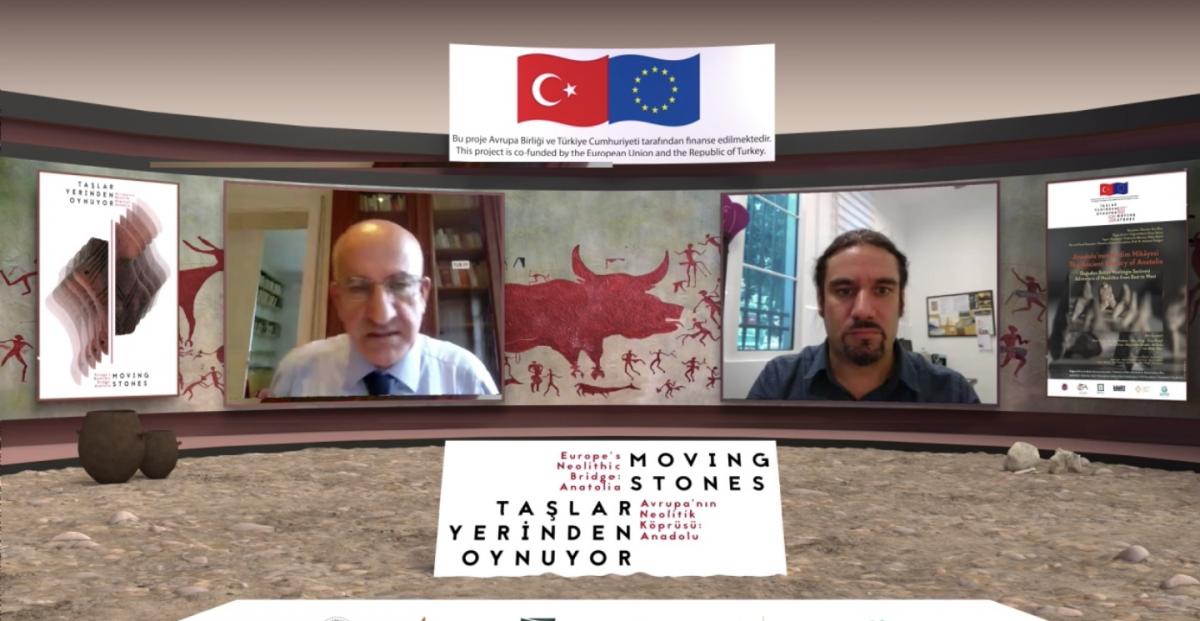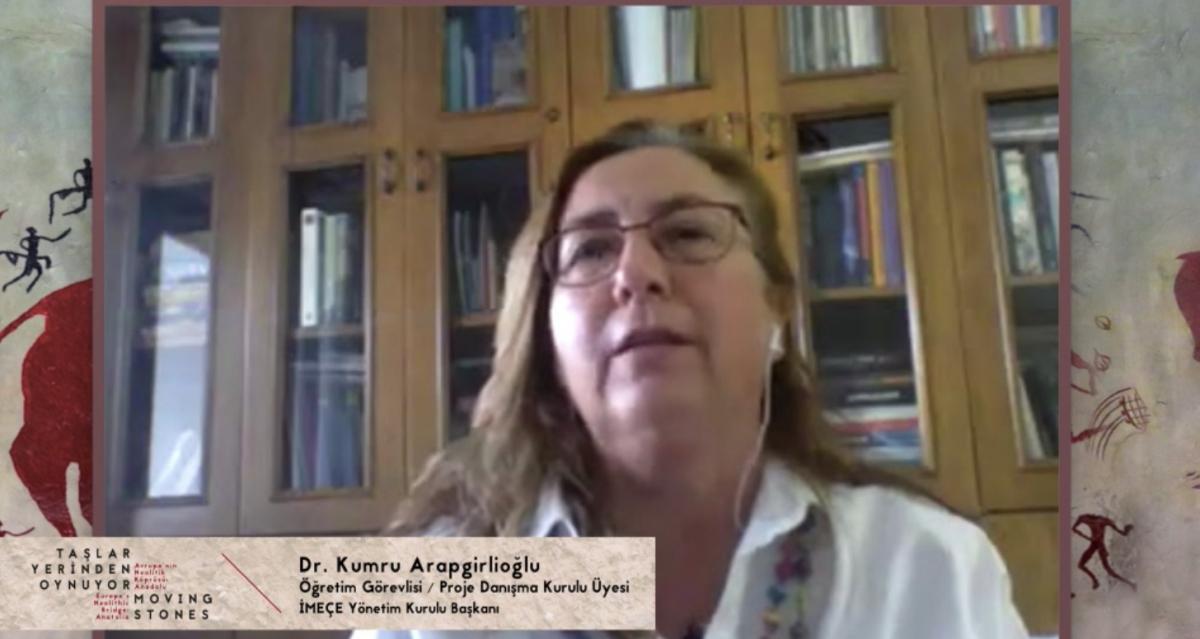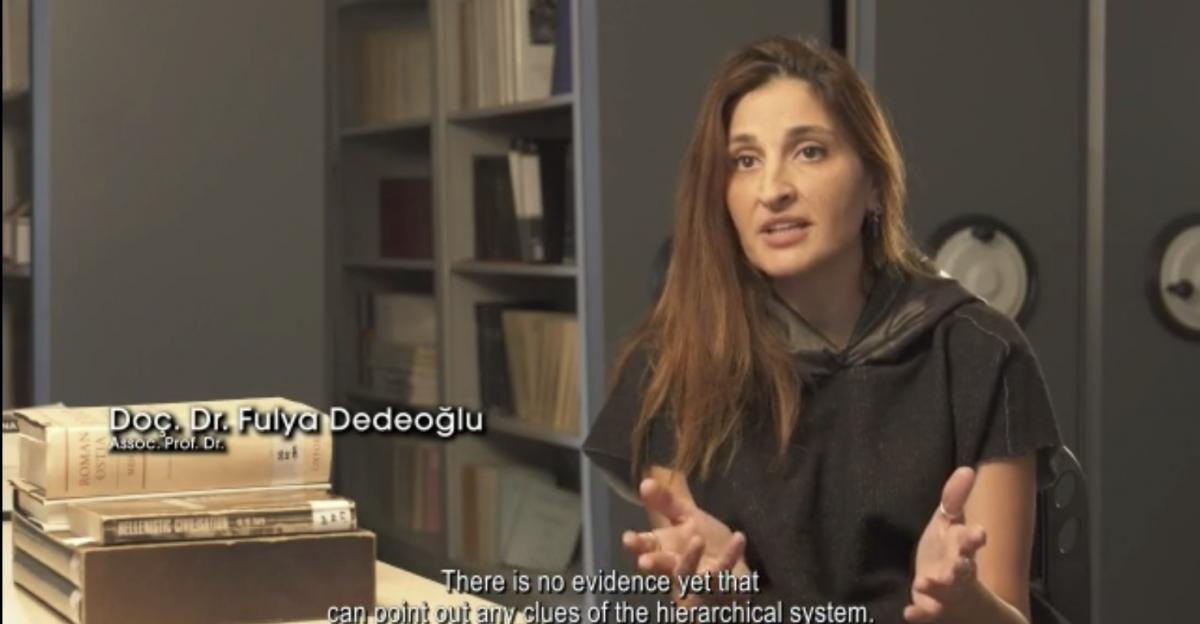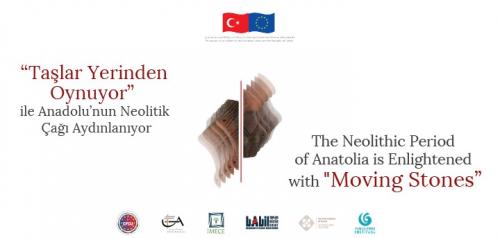The Neolithic Period of Anatolia is Enlightened with "Moving Stones"
A gala was organized for the documentary prepared within the scope of the project “Moving Stones: Europe's Neolithic Bridge: Anatolia”. Executed under the EU-Turkey Intercultural Dialogue Programme implemented by Yunus Emre Institute, the project records the Neolithic culture of Anatolia with a very comprehensive documentary and reflects it to the entire world.
Gala of the documentary, the most important outcome of the project "Moving Stones: Europe's Neolithic Bridge: Anatolia" coordinated by Istanbul French Anatolian Research Institute under the EU-Turkey Intercultural Dialogue Programme implemented by Yunus Emre Institute, was organized on the 15th of September over the project's website "neolithic-bridge.org".
 "Neolithic Studies" constantly offer new data on the shaping of civilization. The project "Moving Stones: Europe's Neolithic Bridge: Anatolia" also provides a fertile ground for cross-border intercultural dialogue, collaborative work, solidarity and sharing on the basis of the common cultural heritage of humanity. Main idea of the project is to contribute to the greater visibility and recognition of the information revealed by this joint transboundary effort of the scientific world as well as "Anatolian Neolithic and its Transmission to Europe".
"Neolithic Studies" constantly offer new data on the shaping of civilization. The project "Moving Stones: Europe's Neolithic Bridge: Anatolia" also provides a fertile ground for cross-border intercultural dialogue, collaborative work, solidarity and sharing on the basis of the common cultural heritage of humanity. Main idea of the project is to contribute to the greater visibility and recognition of the information revealed by this joint transboundary effort of the scientific world as well as "Anatolian Neolithic and its Transmission to Europe".
Many people such as the project's Scientific Advisory Board members, the Director of Istanbul French Anatolian Research Institute Bayram Balcı, Archaeologists Dr. Martin Godon, Dr. Kumru Arapgirlioğlu, Dr. Semih Çelik and Dr. Müge Durusu Tanrıöver attended the press conference of the project.
 Dr. Kumru Arapgirlioğlu emphasized that the institutions extending support to the project played an instrumental role for the realization of the project.
Dr. Kumru Arapgirlioğlu emphasized that the institutions extending support to the project played an instrumental role for the realization of the project.
The meeting covered the findings of the project "Moving Stones" regarding the Neolithic Age. At the meeting, it was stated that new information about family structure and social life was obtained from the data obtained concerning the Neolithic Age.
The documentary screened following the project showcased ongoing excavation works in different parts of Anatolia under the project. Findings from around 60 excavation works were shared including those from Konya/Boncuklu Höyük (Mound), Konya/Çatalhöyük, Niğde/Köşk Höyük and Gökçeada/Uğurlu-Zeytinli Höyük.
 The findings show that the houses in settlements were established over the houses that hosted many previous generations, many tools used in daily life were made of obsidian stone and both hunter-gatherer and agricultural communities were present in these settlements.
The findings show that the houses in settlements were established over the houses that hosted many previous generations, many tools used in daily life were made of obsidian stone and both hunter-gatherer and agricultural communities were present in these settlements.
The excavations conducted in many different regions of Anatolia regarding this period indicate the absence of a state system or social hierarchy as a common finding concerning this period.
ANOTHER WORLD IS POSSIBLE WITH THE NEOLITHIC AGE
 Common view of many experts such as Ulucak Höyük Excavation Chief Prof. Özlem Çevik and Assoc. Prof. Fulya Dedeoğlu talking about the excavations for which they were responsible throughout the documentary is that Neolithic lifestyle sets a very important example for peaceful coexistence.
Common view of many experts such as Ulucak Höyük Excavation Chief Prof. Özlem Çevik and Assoc. Prof. Fulya Dedeoğlu talking about the excavations for which they were responsible throughout the documentary is that Neolithic lifestyle sets a very important example for peaceful coexistence.
Common findings from different excavations point to the absence of any information on why the life in these settlements came to an end or why the people living in these areas left their villages. In general, mounds do not carry any sign of disaster.
ANATOLIA: EUROPE'S NEOLITHIC BRIDGE

Researchers stated that the Neolithic way of life in Anatolia was transferred to the European civilization and in this way, agricultural methods regarding the crops observed in Anatolia were also used in Europe.
Objectives of the project "Moving Stones" include, among others, contributing to the greater recognition and visibility of "the Anatolian Neolithic Global Cultural Heritage of Turkey and its Transmission to Europe", opening new horizons for intercultural dialogue on this basis and establishing a bridge among the segments of the society through scientific research.
Documentary of the project recording and contributing to the greater visibility of the archaeological excavations on the first settlements of human beings from Hasankeyf to Kırklareli as well as their collections in museums with the permission of the Ministry of Culture and Tourism of the Republic of Turkey and under the guidance of excavation chiefs and museum directors was directed by Enis Rıza and produced by Nalân Sakızlı while its field photos were taken by Jale Mekiş Diker.

